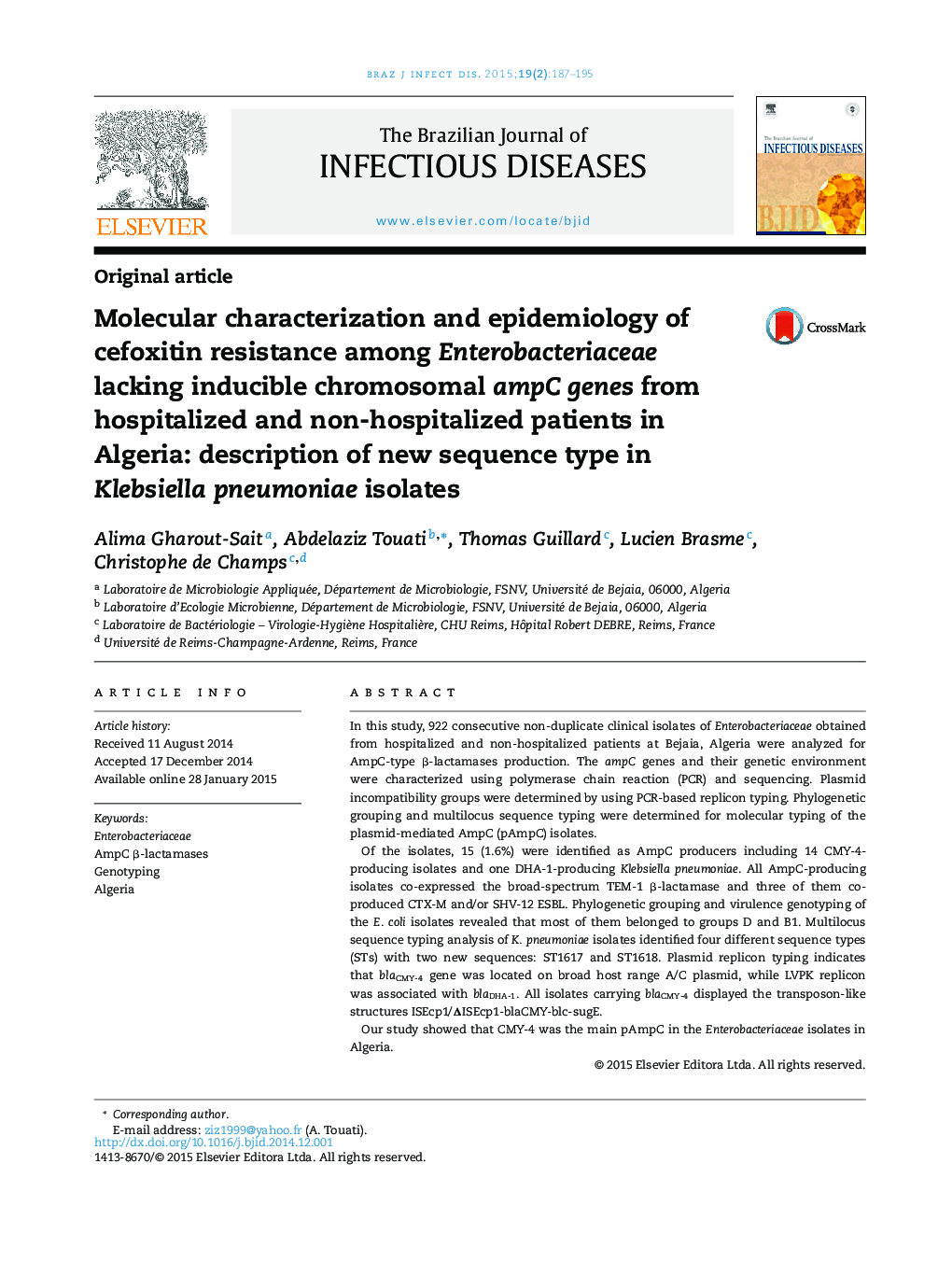| Article ID | Journal | Published Year | Pages | File Type |
|---|---|---|---|---|
| 3343830 | The Brazilian Journal of Infectious Diseases | 2015 | 9 Pages |
In this study, 922 consecutive non-duplicate clinical isolates of Enterobacteriaceae obtained from hospitalized and non-hospitalized patients at Bejaia, Algeria were analyzed for AmpC-type β-lactamases production. The ampC genes and their genetic environment were characterized using polymerase chain reaction (PCR) and sequencing. Plasmid incompatibility groups were determined by using PCR-based replicon typing. Phylogenetic grouping and multilocus sequence typing were determined for molecular typing of the plasmid-mediated AmpC (pAmpC) isolates.Of the isolates, 15 (1.6%) were identified as AmpC producers including 14 CMY-4-producing isolates and one DHA-1-producing Klebsiella pneumoniae. All AmpC-producing isolates co-expressed the broad-spectrum TEM-1 β-lactamase and three of them co-produced CTX-M and/or SHV-12 ESBL. Phylogenetic grouping and virulence genotyping of the E. coli isolates revealed that most of them belonged to groups D and B1. Multilocus sequence typing analysis of K. pneumoniae isolates identified four different sequence types (STs) with two new sequences: ST1617 and ST1618. Plasmid replicon typing indicates that blaCMY-4 gene was located on broad host range A/C plasmid, while LVPK replicon was associated with blaDHA-1. All isolates carrying blaCMY-4 displayed the transposon-like structures ISEcp1/ΔISEcp1-blaCMY-blc-sugE.Our study showed that CMY-4 was the main pAmpC in the Enterobacteriaceae isolates in Algeria.
